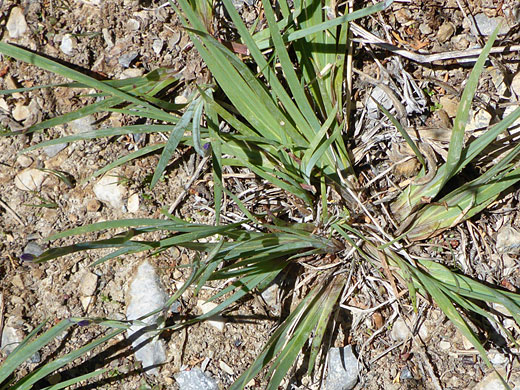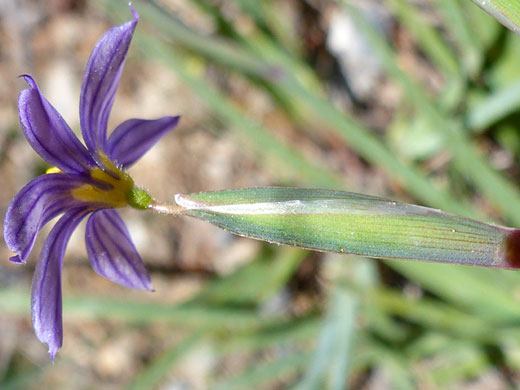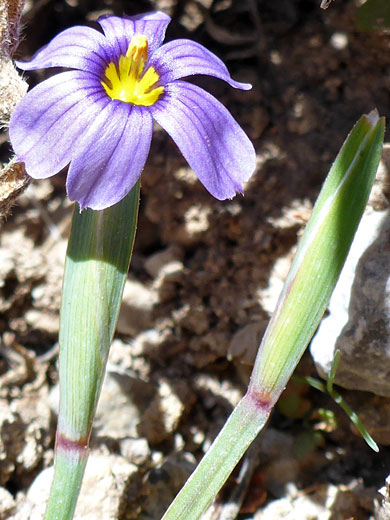Sisyrinchium Halophilum, Nevada Blue-Eyed Grass
Plants > Wildflowers > Iridaceae > Sisyrinchium Halophilum

Six petals, yellow at the base; sisyrinchium halophilum, Waterfall Canyon, Red Rock Canyon NCA, Nevada
Common name:
Nevada blue-eyed grass
Family:
Scientific name:
Sisyrinchium halophilum
Main flower color:
Range:
The Great Basin and some adjoining areas
Height:
Up to 15 inches
Habitat:
Springs, streambanks, wet meadows; generally alkaline areas, between 3,500 and 8,000 feet
Leaves:
Flat, linear, up to 6 per stem
Season:
April to July
As its common name suggests, sisyrinchium halophilum is the most widespread blue-eyed grass in Nevada, and the east of California. Hairless, grass-like leaves grow in a cluster around the stems, which are relatively short, generally less than one foot. Stems and leaves are dull green in color, often with a glaucous coating. Flowers form singly at the top of the stem, above a pair of green, leaf-like spathes, which have translucent margins, widest towards the apex. The outer spathe is between 0.5 and 1 inch in length, similar or slightly longer than the inner. Stems are usually unbranched.
Flowers are formed of six tepals, colored bluish-purple, crossed by darker veins, with a yellow patch at the base. Three outer tepals (up to 0.5 inches long) alternate with three slightly shorter inner tepals. The tips of the tepals taper abruptly to a small point.
Flowers are formed of six tepals, colored bluish-purple, crossed by darker veins, with a yellow patch at the base. Three outer tepals (up to 0.5 inches long) alternate with three slightly shorter inner tepals. The tips of the tepals taper abruptly to a small point.
All Contents © Copyright The American Southwest | Comments and Questions | Contribute | Site Map



